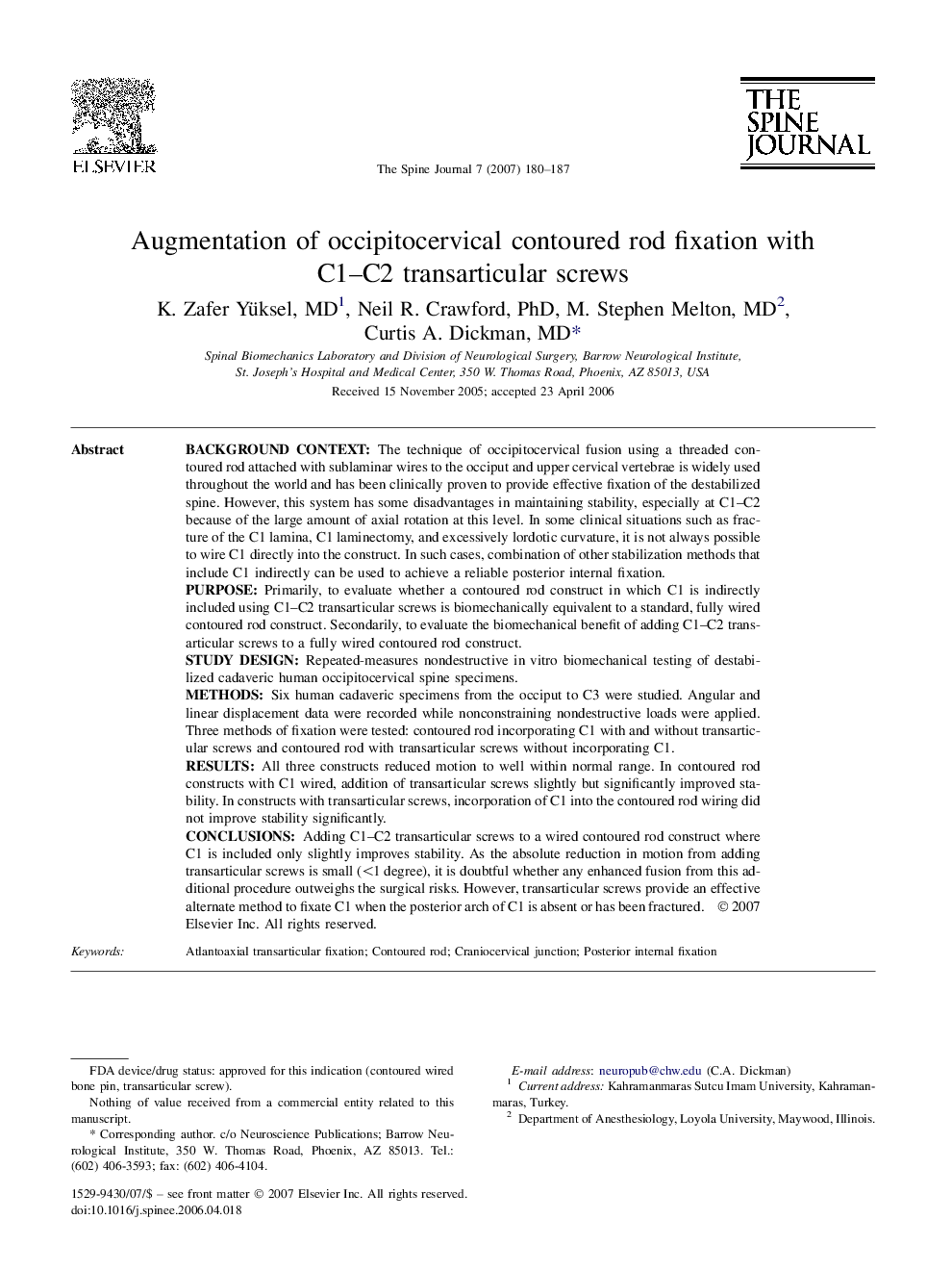| کد مقاله | کد نشریه | سال انتشار | مقاله انگلیسی | نسخه تمام متن |
|---|---|---|---|---|
| 4099368 | 1268638 | 2007 | 8 صفحه PDF | دانلود رایگان |

Background contextThe technique of occipitocervical fusion using a threaded contoured rod attached with sublaminar wires to the occiput and upper cervical vertebrae is widely used throughout the world and has been clinically proven to provide effective fixation of the destabilized spine. However, this system has some disadvantages in maintaining stability, especially at C1–C2 because of the large amount of axial rotation at this level. In some clinical situations such as fracture of the C1 lamina, C1 laminectomy, and excessively lordotic curvature, it is not always possible to wire C1 directly into the construct. In such cases, combination of other stabilization methods that include C1 indirectly can be used to achieve a reliable posterior internal fixation.PurposePrimarily, to evaluate whether a contoured rod construct in which C1 is indirectly included using C1–C2 transarticular screws is biomechanically equivalent to a standard, fully wired contoured rod construct. Secondarily, to evaluate the biomechanical benefit of adding C1–C2 transarticular screws to a fully wired contoured rod construct.Study designRepeated-measures nondestructive in vitro biomechanical testing of destabilized cadaveric human occipitocervical spine specimens.MethodsSix human cadaveric specimens from the occiput to C3 were studied. Angular and linear displacement data were recorded while nonconstraining nondestructive loads were applied. Three methods of fixation were tested: contoured rod incorporating C1 with and without transarticular screws and contoured rod with transarticular screws without incorporating C1.ResultsAll three constructs reduced motion to well within normal range. In contoured rod constructs with C1 wired, addition of transarticular screws slightly but significantly improved stability. In constructs with transarticular screws, incorporation of C1 into the contoured rod wiring did not improve stability significantly.ConclusionsAdding C1–C2 transarticular screws to a wired contoured rod construct where C1 is included only slightly improves stability. As the absolute reduction in motion from adding transarticular screws is small (<1 degree), it is doubtful whether any enhanced fusion from this additional procedure outweighs the surgical risks. However, transarticular screws provide an effective alternate method to fixate C1 when the posterior arch of C1 is absent or has been fractured.
Journal: The Spine Journal - Volume 7, Issue 2, March–April 2007, Pages 180–187